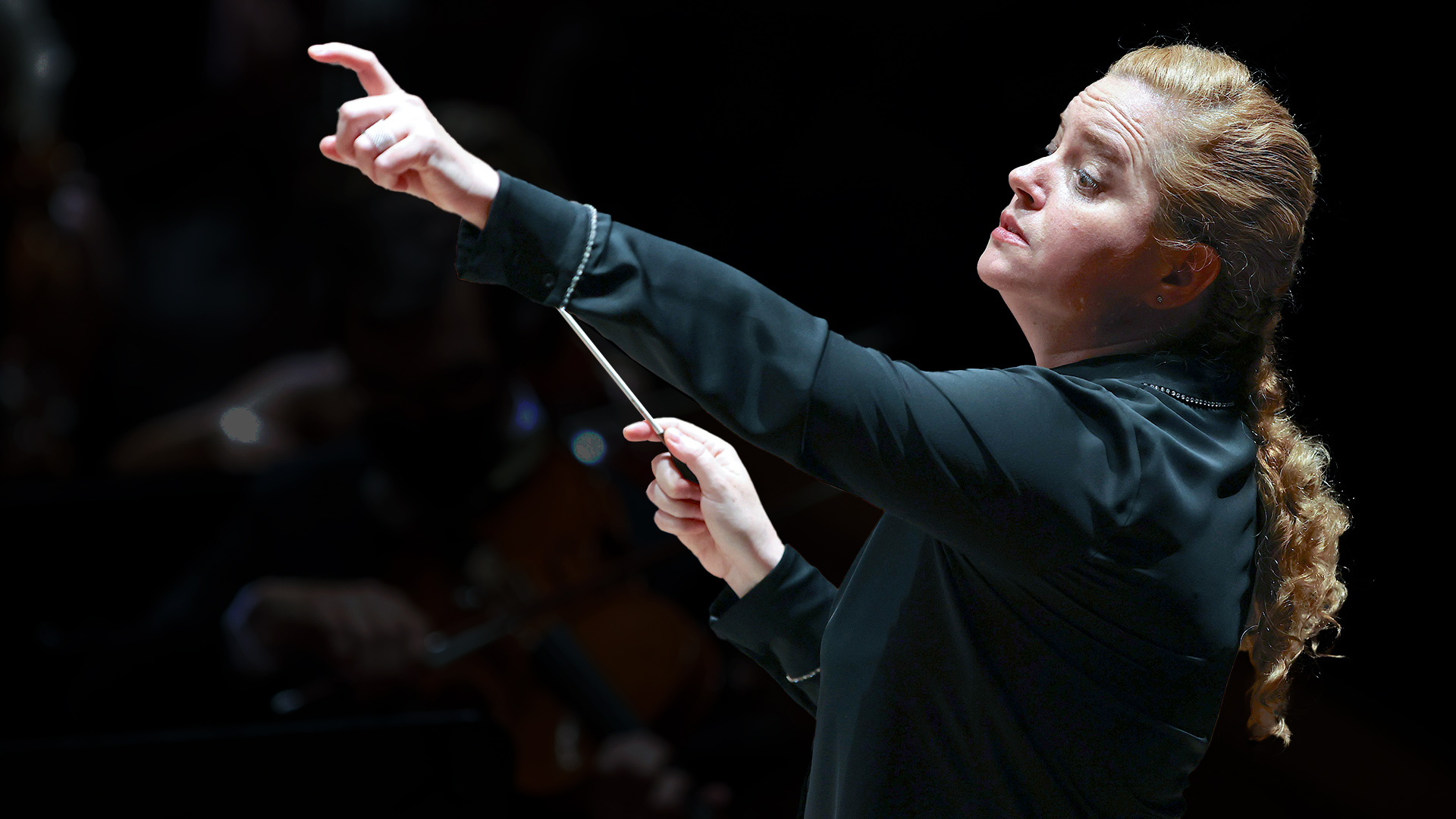FELIX MENDELSSOHN
Symphony n. 10 in B minor for strings orchestra
FELIX MENDELSSOHN
Salmo 42 “Wie der Hirsch schreit nach frischem Wasser” for soprano,
chorus and orchestra op. 42
GIUSEPPE VERDI
from I vespri siciliani Le quattro stagioni
Soprano
Jodie Devos
Conductor
Speranza Scappucci
Opera Carlo Felice Genova Orchestra and chorus
Claudio Marino Moretti, Chorus master
The Symphony n. 10 in B minor for strings is part of a group of thirteen symphonies for strings that Mendelssohn composed between 1821 and 1823. These are the first tests of a not even 14-year-old Mendelssohn who, as a true enfant prodige, was already showing the important influence of Viennese classicism on his writing, as well as a solid knowledge of Bachian and Händelian-inspired counterpoint. The Symphony n. 10, which like the others was intended to be performed in an almost chamber-like context, that of private concerts at home, is characterized by an unflappable serenity. The structure actually consists of only one movement in sonata form, the Allegro, the Adagio having an introductory function. This slow and meditative introduction, but still in a light key, is followed by an Allegro with a bright, lively and flowing character.
The three Salmi 42, 95 and 115 form a fundamental part of Mendelssohn’s sacred music production. Salmo 42 was probably the most successful, due in part to the particular intensity of the text, which was translated into German and slightly modified; in fact, it is not taken up in its entirety. In composing the music Mendelssohn was probably inspired by certain features of Italian belcanto (the composition began during his honeymoon in Italy). The strong words of the text are juxtaposed with music that once again tends toward a serene dimension, to the point that the literary and musical planes appear almost at odds at times. It was also the composer’s choice to include a final verse in conclusion to the final chorus, namely a Praise God, to bring about a definite vein of hope and positivity. The composer was particularly fond of this Psalm, but of the same even Schumann had to say that it was the highest peak Mendelssohn had reached in the sphere of sacred music. The Four Seasons, Quatre Saisons, is a ballet that Verdi composed for the party scene in the third act of the grand opera Les Vêpres Siciliennes, whose debut was held in Paris in 1855. Opening is a section entitled Promenade, in which the god Janus, who rules the year, introduces the personifications of the four seasons, to each of which an action is dedicated. In the final segment, pas de quatre, the seasons are brought together in dance. It is the second of three ballets composed by Verdi – preceded by the one in Lombardi alla prima Crociata and followed by the one featured in the French version of Il Trovatore – and also the longest. While it is apparent that the musical writing is not entirely aligned with the purely choreographic aspects, as was often the case at the time, given the significant advances that dance had seen since the 1930s, which did not yet have an appropriate counterpart in dance music, Verdi’s orchestration nonetheless proves to be skillful, lively and rich in original devices and melodic inventiveness. There are not a few occasions of great musical expressiveness, determining the autonomy of the Quattro stagioni as a symphonic piece, not surprisingly recurring in the repertoires of many orchestras.

